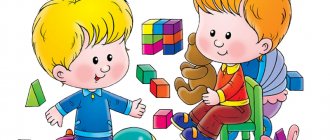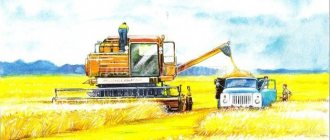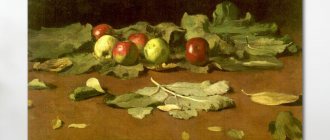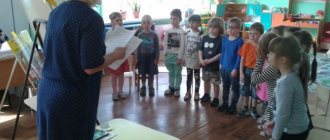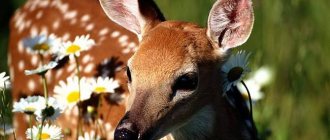Abashevskaya Russian folk toy
Abashevo Russian folk toy is made of clay. Its name comes from the village of Abashevo, Penza province. In the 19th–20th centuries. The best pottery masters lived in the village of Abashevo, whose works were valued throughout Russia. In the Penza province, in the village of Abashevo, there were rich deposits of clay, which was originally used to make beautiful dishes. Abashevo toys were first made in the mid-19th century for children's games. But after a while, the toys began to be given a satirical character, with the aim of ridiculing liars and those who profit from their neighbors.
The peak of development of the Abashevo toy came in the 20th century, when many craftsmen in making dishes from clay could no longer compete with factories. It was during this period that most craftsmen began making whistles, which aroused genuine interest and even delight among children. One of the famous masters of that period was Timofey Zotkin . His works had a significant influence on subsequent generations.
Abashevskaya Russian folk toy
The subjects of Abashev's toys are varied, among the main ones are animals and birds, the main feature of which is an overly long body with a neck and short legs. Animals were often depicted with lush curls and beards. Mostly they sculpted rams, deer, and goats. In appearance they resemble fantastic centaurs, which are characterized by some satire. Abashevo's toy is designed to ridicule human vices, especially love of money and deception. That is why, along with unusual animal figures, you can see an elegant young lady, a dashing horseman and a prince in the form of a ram with a human face.
When making a toy, the master uses clay and several stacks, with the help of which he forms a figurine, makes holes and patterns. Afterwards the product is fired and painted. To paint the Abashevo toy, craftsmen used oil and enamel paints, which ensured the durability and richness of the designs. The theme of the painting is, first of all, nature and the surrounding world, not devoid of symbolism. The Abashevo toy is dominated by red, green and blue colors.
Mazyk Russian folk toy
The wooden Mazyk Russian folk toy is very rare. It was made for relatives - children, wives, parents, etc. In Rus', the Mazyk toy was called “Bolvashka”, “tararushka”, “chip goods”. The type of carving that is made for the toy was preserved among the Mazyks, part of the community of the Ofeni, peddlers, who lived in the former Vladimir province - this is where the name of the product comes from. The subjects of Mazyk toys are varied: people, animals, birds.
Mazyk Russian folk toy “Konik”
The main feature of toy production is the use of only an ax; other tools are used extremely rarely. The toy is made of pine, aspen or linden. Traditionally, it is made from logs with protruding knots. These knots are used in the product; they can turn into a tail or beak, or they can become fins for a pike.
Russian folk toy made of clay and wood
Over the centuries, residents of a certain region have created and passed on from generation to generation original traditions of making folk toys, which were unique, original and combined the national characteristics of a certain region of Russia. By the external features of the Russian folk toy, one could understand in which particular area it was made.
Bogorodskaya Russian folk toy made of wood
As mentioned above, toys were mainly made from two materials: clay (Abashevskaya, Dymkovskaya, Kargopolskaya, Pleshkovskaya and Filimonovskaya toys) and wood (Bogorodskaya Mazykskaya toy, matryoshka, bird of happiness).
Russian folk toy made of wood. Bogorodskaya toy
Bogorodskaya Russian traditional toy comes from the village of Bogorodskoye, Moscow province. The toy is made of wood, mainly linden. Before making a toy, the linden tree must dry for two years. Wood chips are used to make toy stands. Bogorodsk toys are rarely decorated or painted. In Rus', the surface of finished figurines was cleaned with sandpaper. Next, the toys are finished with carvings, which rhythmically lie on the surface and decorate the product. Traditionally, some parts of the toy were made movable. Some toys were mounted on stands-bedside tables, and a spring was inserted inside - it brought the figure into action.
Bogorodskaya Russian folk toy
Other toys were made on spreader bars (“Herd”, “Cavalry”, “Soldiers”). There are toys whose moving parts are attached to weighted strings; the weight swings, pulls the thread, it activates parts of the figures. The subjects of the Bogorodsk toy are varied - these are heroes of fairy tales and fables.
Pleshkovskaya Russian folk toy
Toys from Pleshkovo are molded from a mixture of clay and mica. After firing the toy, mica inclusions give the product an additional silvery shine and sparkles over the entire surface. Burnt whistles have a porous structure and a pink tint. Craftsmen paint the clay in a free manner and distribute natural paint in spots. Initially, no paint was used at all in the manufacture of Pleshkovo toys, but more modern craftsmen grind bricks to completely cover the whistle and mix it with burdock or hemp extract. Previously, it was enough to find the required amount of local golden clay and draw 2-3 stripes along the figurine.
The name of the toy comes from the village of Pleshkovo, Oryol province. The toys are simple and concise. The main colors of the Pleshkovo toy: blue, red, green. When painting the product, natural dyes were used - elderberry and burdock juice, which were applied to the surface of the figure in the form of spots. The subjects of Pleshkovo toys are different: animals (horses, rams, cows, deer, roosters), birds (ducks), people (soldiers, ladies), fantastic creatures (mermaids, birds - sirins).
Pleshkovskaya Russian folk toy
The theme of peasant life was also widespread. For example, a very popular image for a clay figurine is a woman with a baby on her left arm. Among the livestock, cows, roosters, rams, and horses were most often depicted.
Pleshkovskaya Russian folk toy
Nowadays, Pleshkovo bells and whistles are created using traditional technology and ancient Russian mythical symbols, for example, mermaids.
Fedoseevskaya Russian folk toy
Fedoseevskaya Russian folk toy was made in the village of Fedoseevo, Nizhny Novgorod province. At the end of the 19th century in the Nizhny Novgorod region, the toy business developed everywhere. Yakov Aleksandrovich Aleksandrov lived in Fedoseevo , who made movable toys from chips and boards.
Fedoseevskaya Russian folk toy
Toys are made with a knife and an ax, using wooden chips and planks. Chips and planks are nailed together with nails and painted with simple patterns. Initially, toys were painted with a quill pen. Later, they began to dip the entire product into yellow paint, creating a sunny background, and then applied flowers.
The main plot of Fedoseev's toy is horses. They also cut out doll furniture, cars, boats, carousels, sleighs, airplanes, trams, and multi-story steamers. By the 1930s, Fedoseev toys began to be produced on an industrial basis in the city of Semenov. In 1948, the Fedoseevsky artel of toy makers was annexed to the Semenovsky cooperative.
Fedoseevskaya Russian folk toy
The main colors of the Fedoseev toy are yellow and red. In the 1950s, the fishery began to lose its former popularity. Currently, master N.S. Muravyov is reviving the toy craft.
